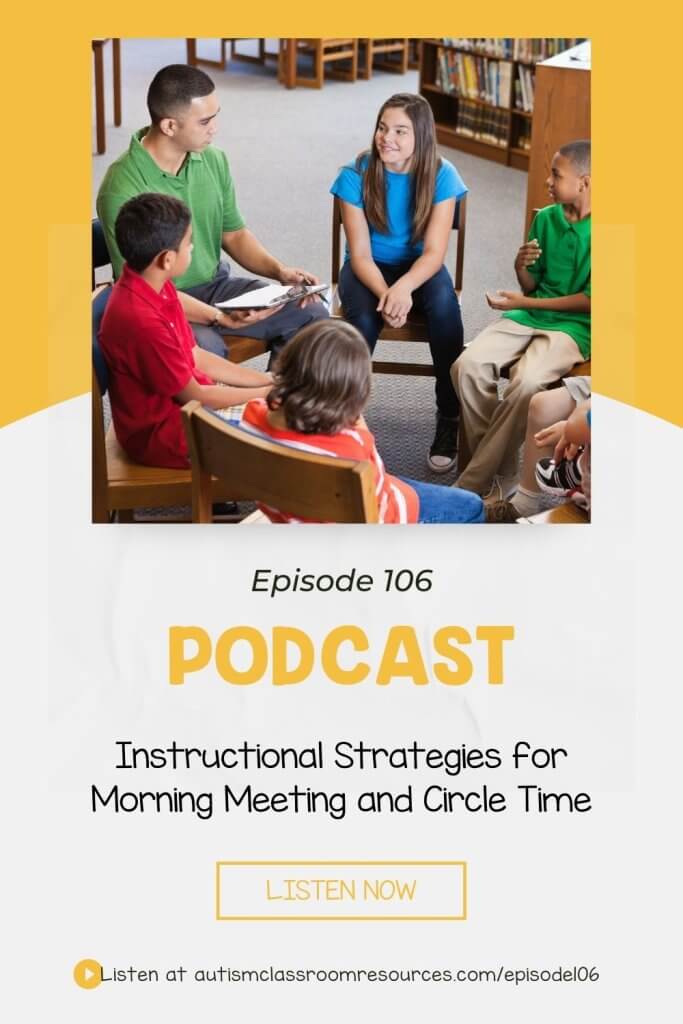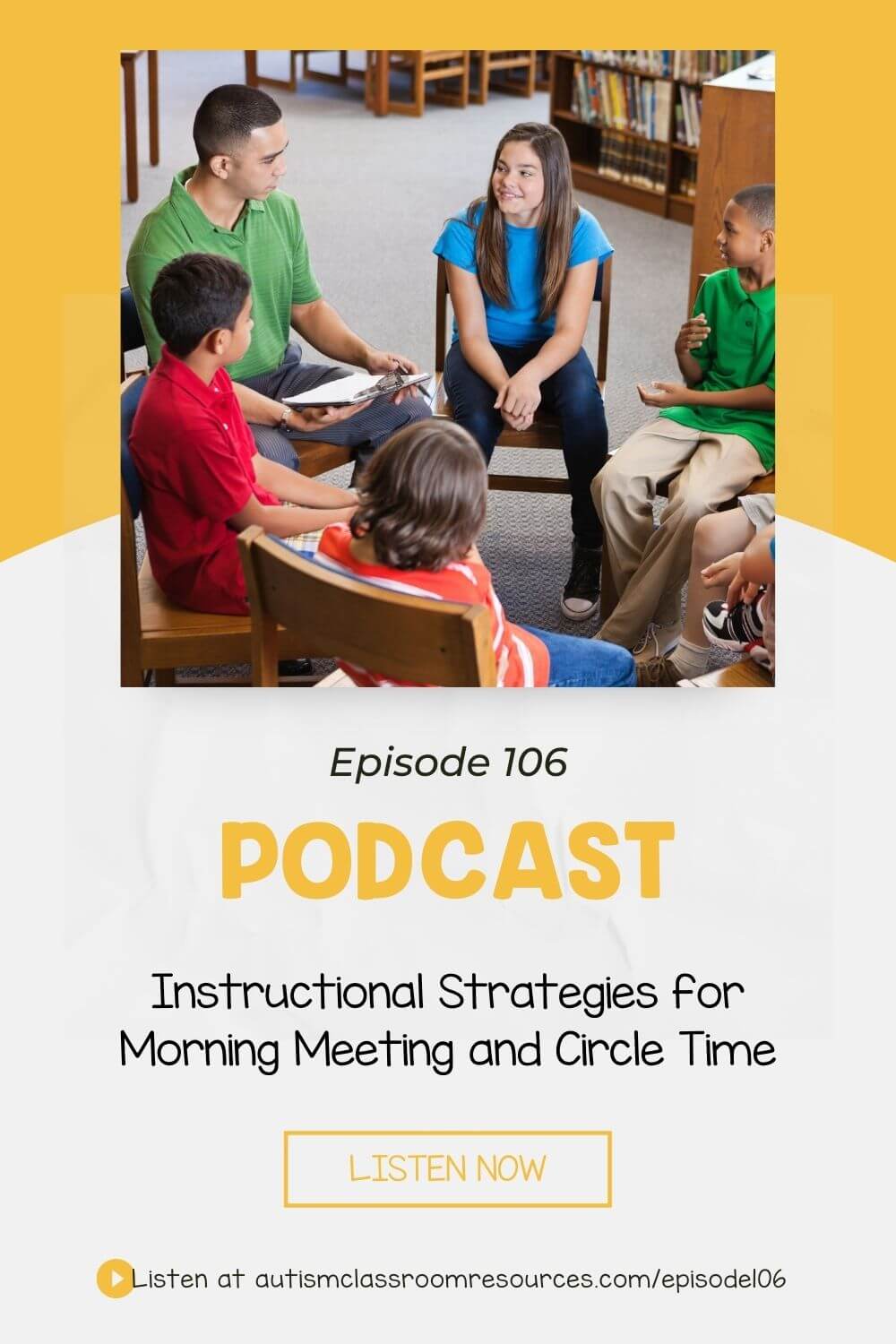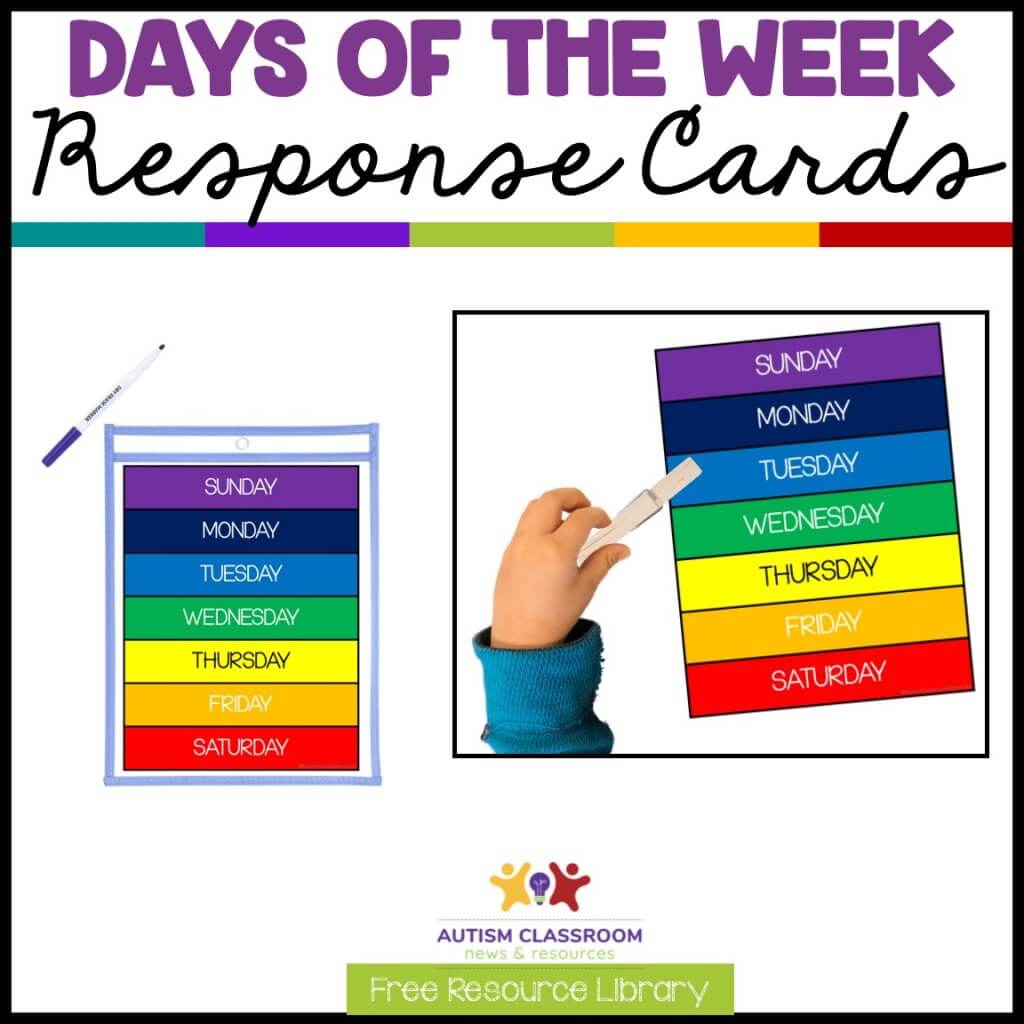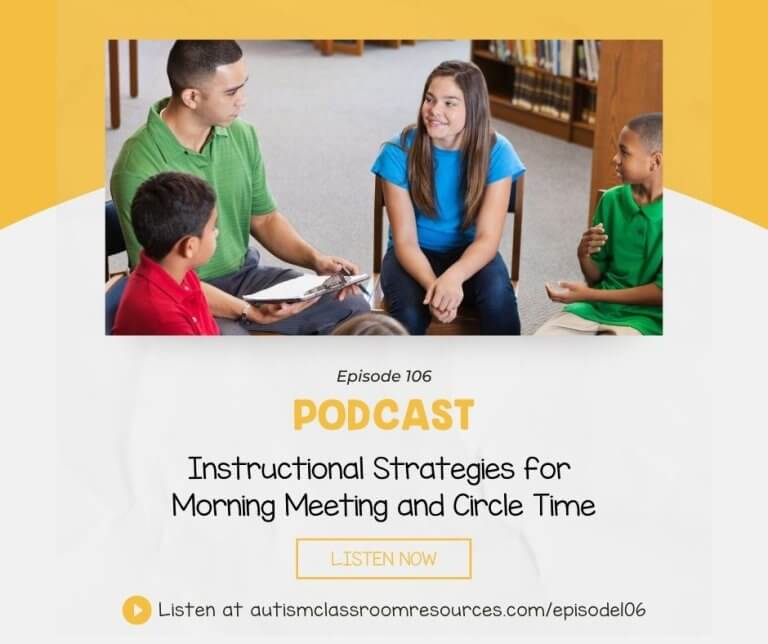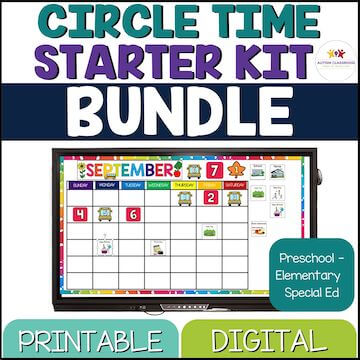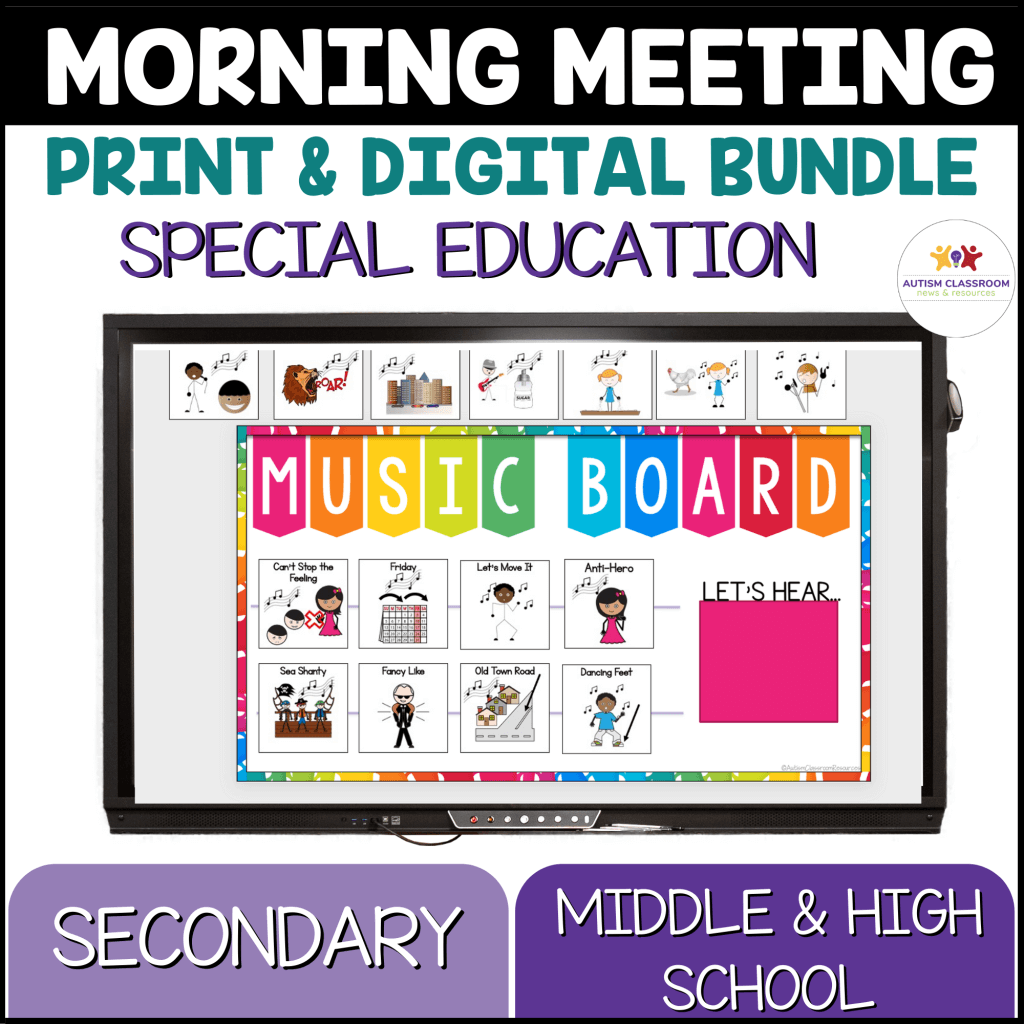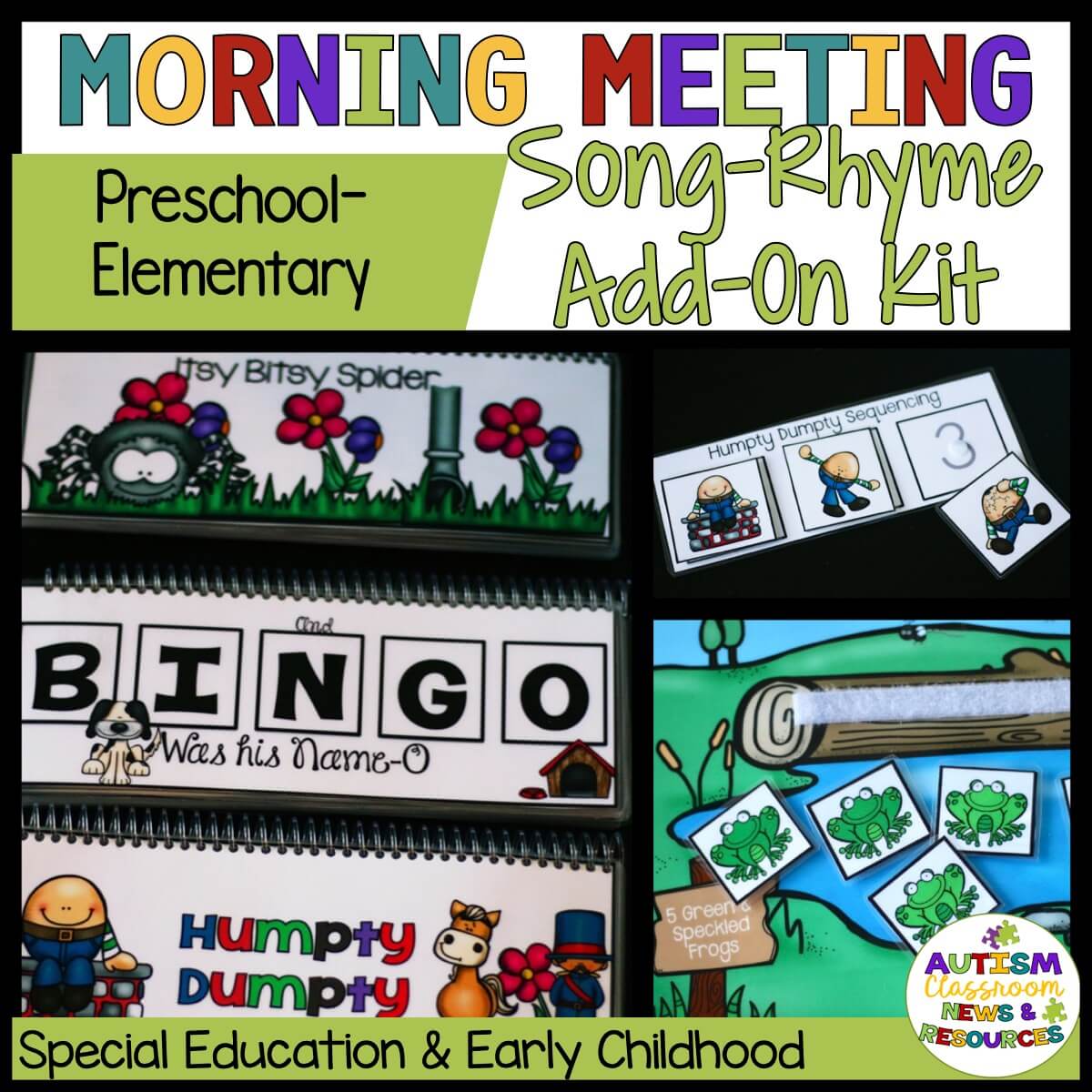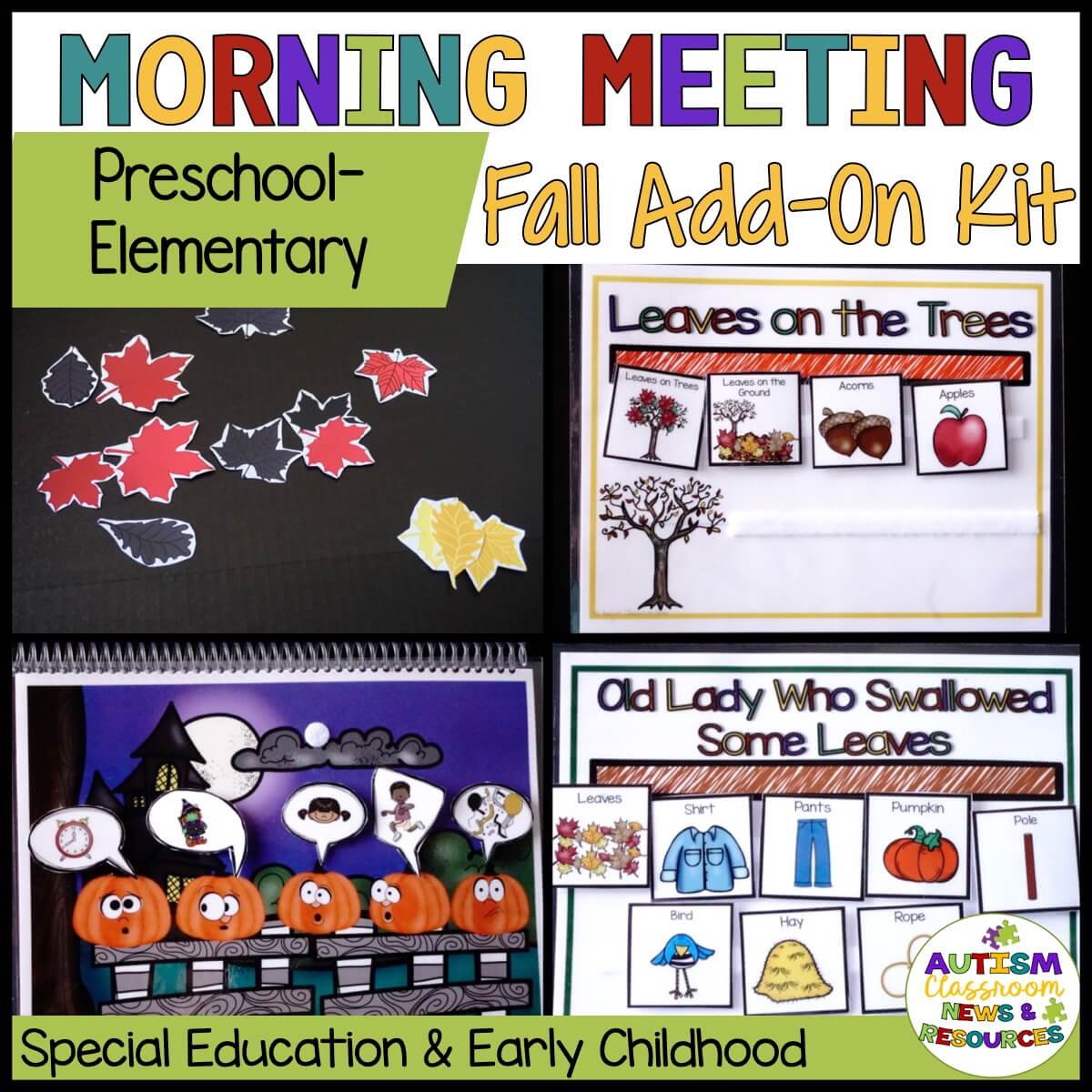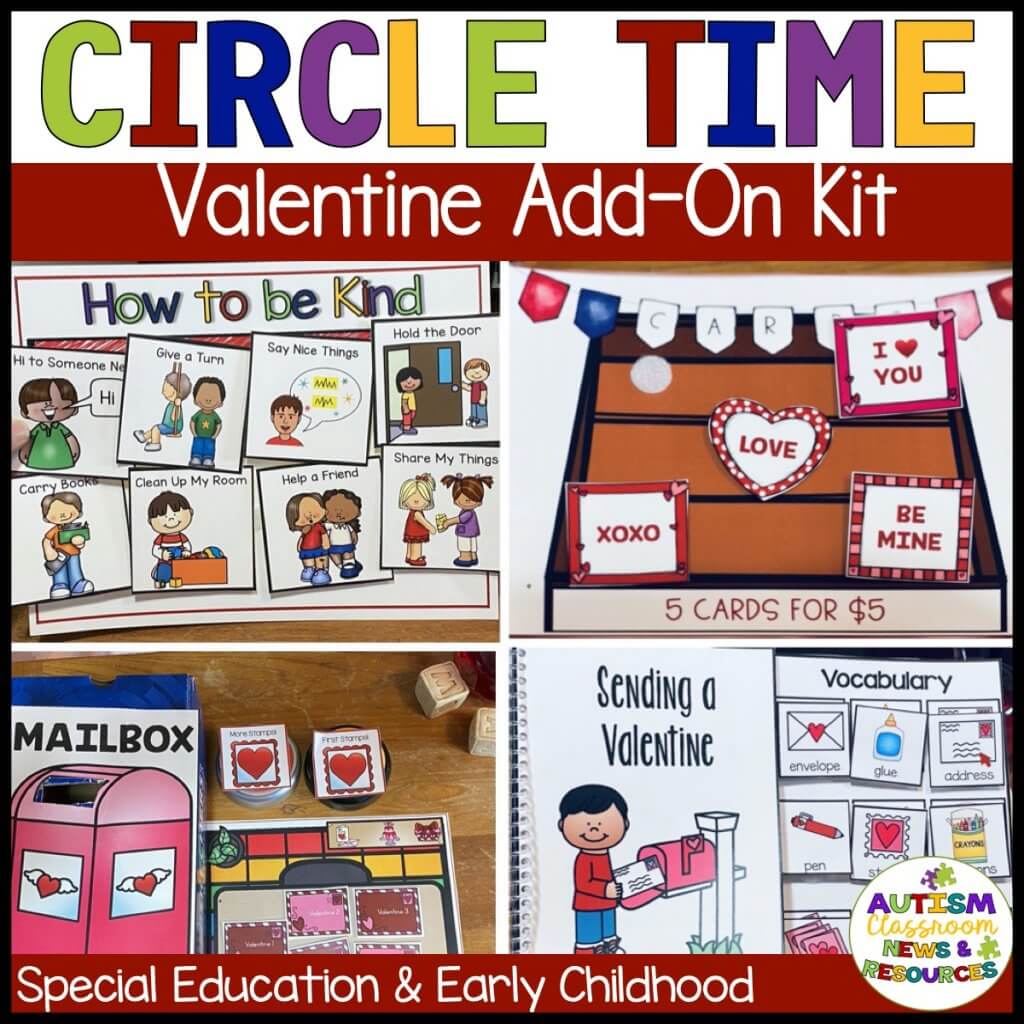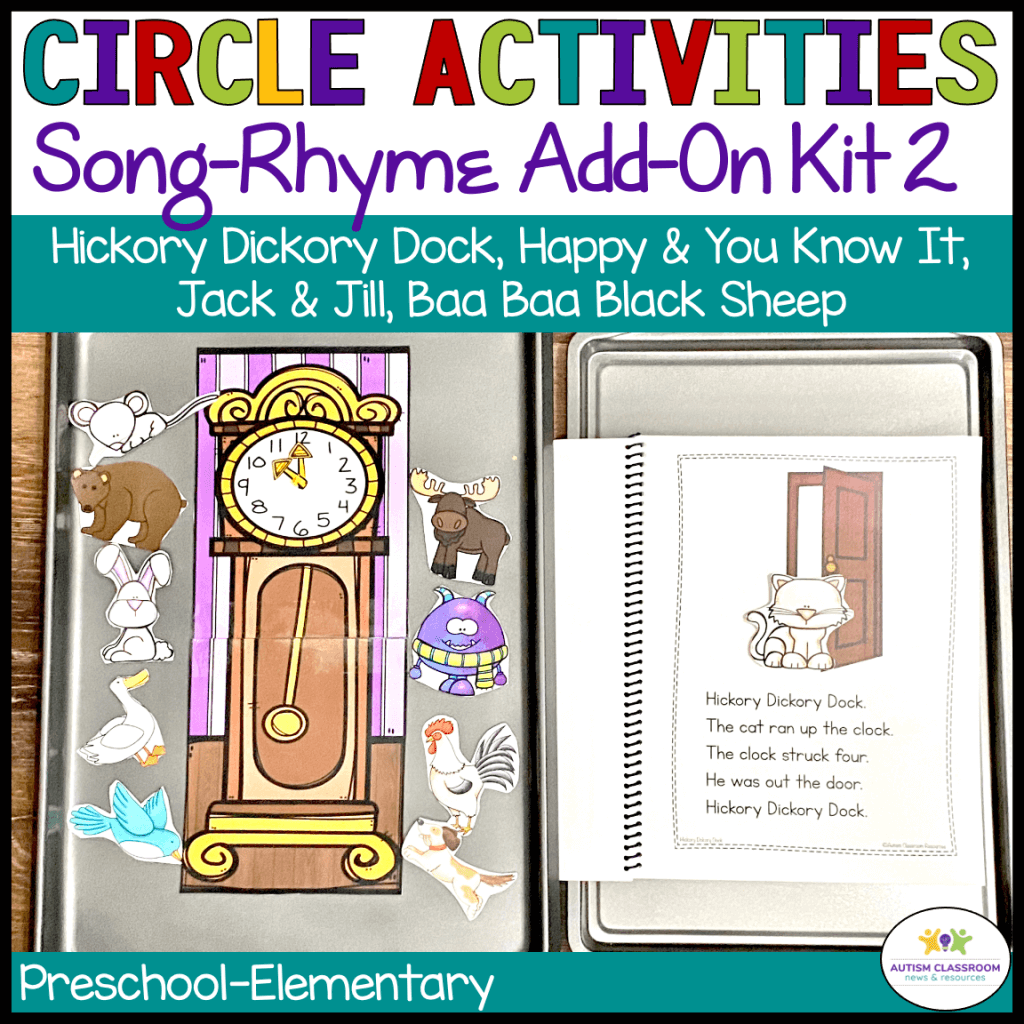Welcome to the Autism Classroom Resources Podcast, the podcast for special educators who are looking for personal and professional development.
Christine Reeve: I’m your host, Dr. Christine Reeve. For more than 20 years, I’ve worn lots of hats in special education but my real love is helping special educators like you. This podcast will give you tips and ways to implement research-based practices in a practical way in your classroom to make your job easier and more effective.
Welcome back to the Autism Classroom Resources Podcast. I’m Christine Reeve. I’m happy to be your host. We are still talking about circle time or morning meeting. I talked in Episode 104 about why this group instruction is so important because I know how easy it is to think that your kids can’t handle it and try to kind of not have it, but I do think it’s really important. In the last episode in Episode 105, I talked about the skills that we can teach in whole group instruction. Today, I’m going to talk about the strategies that we can use to teach these skills during group instruction. Because there are some strategies that we can really capitalize on in group instruction. There are some that might surprise you that you can totally use in groups that you might have thought had to be one-to-one. I have a free download for you at the end of the episode. Make sure that you hang out and grab that as well. Also, if you’re looking for ideas of how to effectively run your morning meeting in your classroom, check out the links for this post or just come join the Special Educator Academy where we’ve got workshops, quick wins, and even five minute lightning trainings for ideas for early childhood through high school group activities. You can grab a seven-day free trial at the specialeducatoracademy.com and get started today making morning meeting your favorite part of the day. Now, let’s get started.
In our last episode, I talked about the three stages of instruction. I talked about explicit instruction, I talked about practice instruction, I talked about generalization, and how group can really fit in all three of those. Often, we think of our group activities as being practice or generalization but there are skills that we can both introduce as well as do explicit instruction with in morning meeting. It’s also useful to use some of the same strategies that we use in our explicit teacher focused instruction with our students, whether that’s one-to-one or in small group in our circle time or our morning meeting because it enhances our generalization. For instance, if I teach something using discrete trials in my teacher instruction, it can be very helpful to use that same strategy, discrete trials, in my group instruction because that is going to be more familiar to the student, it’s going to be more likely that is going to help that generalize. Over time, I’m going to want to move to other ways of presenting that skill but by using that same strategy, I’m going to enhance the likelihood that it will be demonstrated, the skill will be demonstrated in that new environment.
Now, one of the things that I still continue to hear on social media and in teacher discussions are things like, “No, you can only do discrete trials one to one.” You might be surprised that the first kind of instructional strategy I’m going to talk about to use in group instruction is actually discrete trials. There is no reason why you cannot use discrete trials in group instruction. First of all, you can use discrete trials in small group instruction for your explicit introductory instruction. We have used it for many years that way. There is research that shows that it is effective that way. It actually has some advantages to being used that way because it is going to lend itself to better generalization.
Now, as with everything that I always talk about, the answer about when to use it and how to use it is going to depend on the student. There will be some students for whom discrete trials will be best done initially one-to-one. There will be some students who do need the environment broken down into such stark contrast with no distractions that they are going to do best without a lot of distractions in group would be hard. But for the majority of students, we can use the same technology we use discrete trials for in a group environment, and in fact, we probably should. The other interesting thing when I start to think about instructional strategies is the similarity of instructional strategies when you start to try to pick them all apart across all the different disciplines. If you’re a behavior analyst, step out of your behavior analyst hat for just a moment, and look at all the different strategies across speech pathology, education, and behavior analysis.
If you start looking at them with your colleagues, you might say, “That looks a lot like what I do, but I call it this.” I have a colleague who’s a speech pathologist that I’ve worked with for many, many, many years now, more than 20, I guess. She and I, over the time, have looked at a lot of videos together. She would often say, “Wow, that looks like really good language facilitation.” I would look at it, and say, “Yeah, that looks like really good, naturalistic instruction or really good pivotal response training.” The more we look at things, the more we go, “Well, it’s all the same.” What we call it might be different but the steps of good instruction are by golly just the steps of good instruction. Discrete trials are the steps of good instruction. The steps of discrete trials are, I present a clear instruction of some kind, a clear stimulus, that’s what we call it in behavior analysis because we like our jargon. I present that instruction and I wait. Then if the student needs it, I present a prompt, and then from that prompt I get a response, I decide that response is good enough.
I reinforce it if I decide it’s I want it to increase so I’m reinforcing it. I may correct it if there was an error or not correct it, depending on what strategy I’m using. I’m not going to go into a tutorial on discrete trials auditorily because that would be crazy. But you can embed that same technology into group instruction, whether it’s I do one discrete trial with this student and move on to another student and do another one. Whether it’s I do a couple of them with him and then move on to another student. He gets his reinforcer or he gets a break or whatever. Whatever it is, I can do that in group instruction. There’s no reason I can’t do that. There is nothing in the discrete trial literature that says that we have to do discrete trials one to one because it’s good instruction and we should be moving our discrete trials into larger environments to get generalization, otherwise, we’re doing a disservice to our students. We can use embedded discrete trials.
I have more on my blog about discrete trials and what they are. I’ll make sure that there’s a link in the blog post for those if you want to know more about the basics of what exactly it is and what the literature says. Prompting, we use prompting all the time. What kind, how it’s faded, who delivers it all depends on the student, the situation, but we use that in our group activities. We use incidental teaching. We use pivotal response training. I think of pivotal response training and this actually comes from the strategies for teaching based on Autism Research. I think it’s actually in their curriculum manual and it suddenly turned a light bulb on for me. They described pivotal response training as incidental teaching on steroids, and suddenly, I went, “Oh, now I get it.” It’s a little bit more than that but one of the things that it is, is it takes that I’m going to sabotage the environment as my SD for a discrete trial. I’m going to get a response and then I’m going to reinforce it. Then I’m going to do it over and over and over. That’s what we’re going to do. I’m going to set up opportunities, I’m going to get a response, and then I’m going to do it. I’m going to have a consequence like a reinforcer, and then I’m going to do it again.
In morning meeting, I’m asking a question, I’m giving a response, I’m holding out an instrument, and I’m waiting for the student to ask me for it. It’s in a closed container. I know he really likes the Jingle Bells, I know he likes to play them, so I’ve put it in something he can’t access and I’m waiting for him to tell me that he wants it in some way. When he does that, he gets it. Clear incidental teaching or national environment training, however you want to call it. We use modeling. We have a student who is a little bit better at a skill, sitting next to another student, and he is modeling saying, “Good morning.” We’re using that as a model for a student or we have a video model that we’re using. We can use modeling very easily within group instruction. We also use closed techniques. Now, those of you who are reading instructors, probably think of closed techniques as a way to promote reading comprehension, which I think is probably where it started.
Speech pathologists talk about closed techniques as a way to elicit language from students. They leave off words and common rhymes, and things like that. Things like Hickory Dickory, and you’re trying to get the end of that phrase. ♫ The itsy bitsy spider went up the water… ♫ and then you’re leaving a blank so that you get them to continue those common things. ♫ Ring-around the rosie, all fall… ♫ and we’re waiting for some kind of response. It might be a verbal response, it might be a gesture response but we’re giving them that close opportunity to close out that loop of language with a familiar something that they’re hearing. We also do choral responding, especially if you have students that can’t handle a long morning meeting. You don’t want to wait for every single student to say how they came to school today. You may want everybody to say it at the same time so that your morning meeting is quicker. Don’t feel like you have to be tied to every single student, waiting for all 10 students to answer before they get to answer. That may make your morning meeting really difficult. Instead, everybody could answer at the same time.
Another way to do that where it is not as loud, and where you can check everybody’s answer is to use one of my favorites, which is response cards. Response cards are one of my favorite tools to use in any group activity. Response cards are simply cards, dry erase cards, dry erase boards, anything that the students can hold up. It might be a thumbs up and a thumbs down that they can do to answer a question, non-verbally usually. You scan the room and you can see who got it and who didn’t. The thing that’s really great about them for a lot of our students is that everybody practices every single opportunity. Imagine that you’re doing a math problem, imagine you have all of the students counting up who is in the morning meeting every day. That means that everybody’s counting every day. They’re not waiting for 20 other preschoolers to count each day and only getting an opportunity to practice that skill one time a month. They’re practicing every single day on their own board and holding it up and you can see who’s getting it, who’s not so you know who needs extra help. Everybody has a popsicle stick that says on one side, it’s a bus and on another, it’s a car. How did you come to school today? And they hold it up facing the teacher. Or maybe they have something that has a clothespin on it. Maybe it’s a yes-no. One side says, yes. One side says, no. You could do multiple choice. If you use Kahoot, you can have it where it’s electronic for older students. You can do, again, as I said, thumbs up, thumbs down.
You can do lots of different kinds of things with response cards but response cards are awesome because everybody responds every time. There isn’t any waiting. There’s more practice and all the students are engaged each time. It also makes it harder for them to see that other person’s answer, whereas with choral responding, sometimes they just wait to hear what everybody’s answer is. Yes, they could see it but a lot of times the way they’re sitting in the group it’s harder for them to see the answers. I actually have a free set of response cards for you in the Free Resource Library. You can grab those in the episode post for this at autismclassroomresources.com/episode106.
There’s so much that you can do with group time and it’s so important for our students to learn to learn in a group because, of course, that’s how instruction takes place in most situations. Make sure that you grab those response cards. I’ve also got links on that post for morning meeting activities that are already designed for you to engage students that already have manipulatives and tools to help the students get engaged. Seriously, consider trying out the seven-day free trial of the Special Educator Academy and our brand new pathway for getting started with a killer morning meeting. You can get that at specialeducatoracademy.com. I hope to see you back here next week when I’ll be talking about collecting data during group time instruction. Until then, I will be skipping down the academy path to an awesome circle fun.
